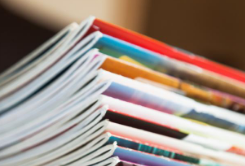The results for Ireland in the OECD PISA report 2015 show second-level students performing near the top of the world in reading literacy and significantly above average in science and maths.
The OECD PISA 2015 report compares the performances of 15-year-old students in 72 countries across the globe. The report shows that Ireland is one of the world’s top performers in reading literacy, coming 3rd out of 35 OECD countries and 2nd amongst EU countries. Students in Ireland are also performing significantly above average in science and maths; Ireland is ranked 13th out of 35 OECD countries and 6th among EU countries in science and 13th out of 35 countries and 9th among EU countries in maths.
A further positive finding for Ireland is that for all three areas, the percentage of students in lowest performing levels has decreased. While the percentage of students in the higher performing levels has also increased, concerns have been raised regarding the need to build the performance of higher achieving students especially in science and maths.
ASTI General Secretary Kieran Christie welcomed the report and said the results contain important messages for Ireland:
“This is good news story for all of those involved in the education service. It shows that despite the harrowing cutbacks implemented during the recession years, the dedication and commitment of teachers, parents and school managers has ensured that students have continued to receive a high quality education. It is also clear from today’s results that teachers successfully implemented new policies designed to improve students’ learning outcomes – namely the National Literacy and Numeracy Strategy and School Self-Evaluation.
“However, while students performed above average in science in 2015, there has been a drop in our ranking in science compared with previous PISA studies. This drop in science is particularly associated with students’ performance on computer-based science tasks. Two recent Millward Brown surveys commissioned by the ASTI found that the teaching and learning of science in second-level schools is being hindered by education cutbacks and a low level of investment in IT,” said Mr Christie.
- In a 2010 Millward Brown survey 70 per cent of science teachers surveyed said the IT facilities in their schools were inadequate. Only 46 per cent of teachers were regularly using IT in their science classes.
- In a 2015 Millward Brown survey second-level schools were found to have a low level of IT equipment and 61 per cent of science teachers said their lab facilities were inadequate.

